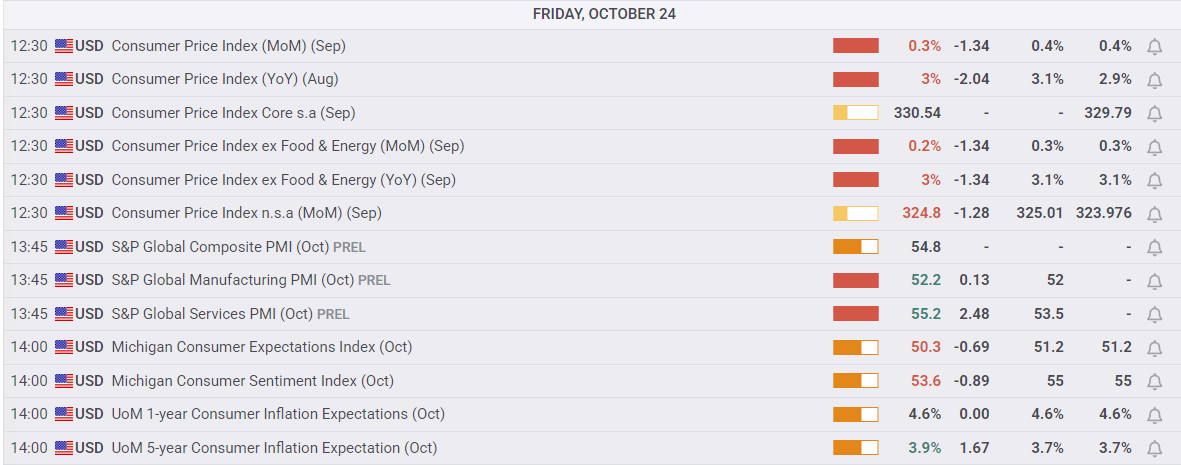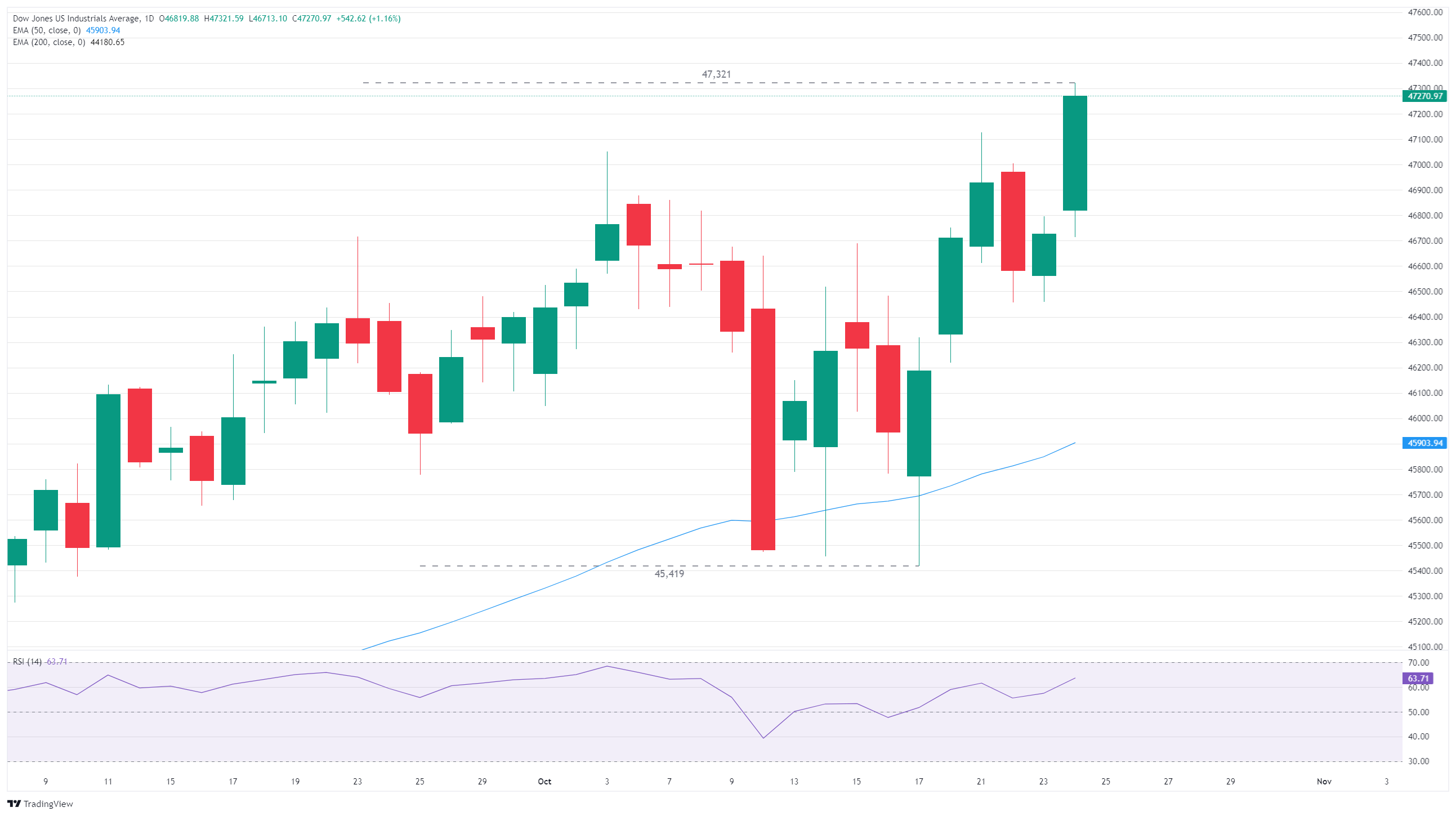Dow Jones Industrial Average reaches new peak as US CPI inflation boosts rate cut bets
- The Dow Jones gained solid footing on Friday, bolstered by fresh hopes for Fed rate cuts.
- US CPI inflation rose less than expected in September, stoking market sentiment.
- Investors have further priced in a firm two rate cuts from the Fed this year.
The Dow Jones Industrial Average (DJIA) lumbered into record highs on Friday, posting intraday bids north of 47,300 for the first time ever. Investor sentiment hit high gear after US Consumer Price Index (CPI) inflation came in below expectations, keeping hopes for further interest rates from the Federal Reserve (Fed) pinned to the ceiling.
Headline CPI inflation came in at 3.0% YoY in September, clocking in just below the expected hold at 3.1% and sending investors scrambling to pick up risk assets on expectations that the Fed is now locked into two quarter-point interest rate cuts by the end of the year. US CPI metrics broadly came in below expectations, and markets are brushing off the fact that most inflation readings continue to run well above the Fed’s 2% mandate.
Rate cut bets continue to climb on not-hot inflation data
According to the CME’s FedWatch Tool, rate market bets of back-to-back interest rate cuts in October and December are over 95%. Rate traders have also pulled forward the date for the first interest rate cut in 2026 up to March from April.
September’s Purchasing Managers Index (PMI) survey results also surprised markets to the upside, with the Services component rising to 55.2 versus the expected 53.5. However, despite the upswing in business confidence, consumers remain notably more downbeat, with the University of Michigan Consumer Sentiment Index declining to 53.6 from 55.0. UoM Consumer 5-year Inflation Expectations also rose again, climbing to 3.9% from 3.7%.

Dow Jones daily chart

Dow Jones FAQs
The Dow Jones Industrial Average, one of the oldest stock market indices in the world, is compiled of the 30 most traded stocks in the US. The index is price-weighted rather than weighted by capitalization. It is calculated by summing the prices of the constituent stocks and dividing them by a factor, currently 0.152. The index was founded by Charles Dow, who also founded the Wall Street Journal. In later years it has been criticized for not being broadly representative enough because it only tracks 30 conglomerates, unlike broader indices such as the S&P 500.
Many different factors drive the Dow Jones Industrial Average (DJIA). The aggregate performance of the component companies revealed in quarterly company earnings reports is the main one. US and global macroeconomic data also contributes as it impacts on investor sentiment. The level of interest rates, set by the Federal Reserve (Fed), also influences the DJIA as it affects the cost of credit, on which many corporations are heavily reliant. Therefore, inflation can be a major driver as well as other metrics which impact the Fed decisions.
Dow Theory is a method for identifying the primary trend of the stock market developed by Charles Dow. A key step is to compare the direction of the Dow Jones Industrial Average (DJIA) and the Dow Jones Transportation Average (DJTA) and only follow trends where both are moving in the same direction. Volume is a confirmatory criteria. The theory uses elements of peak and trough analysis. Dow’s theory posits three trend phases: accumulation, when smart money starts buying or selling; public participation, when the wider public joins in; and distribution, when the smart money exits.
There are a number of ways to trade the DJIA. One is to use ETFs which allow investors to trade the DJIA as a single security, rather than having to buy shares in all 30 constituent companies. A leading example is the SPDR Dow Jones Industrial Average ETF (DIA). DJIA futures contracts enable traders to speculate on the future value of the index and Options provide the right, but not the obligation, to buy or sell the index at a predetermined price in the future. Mutual funds enable investors to buy a share of a diversified portfolio of DJIA stocks thus providing exposure to the overall index.

